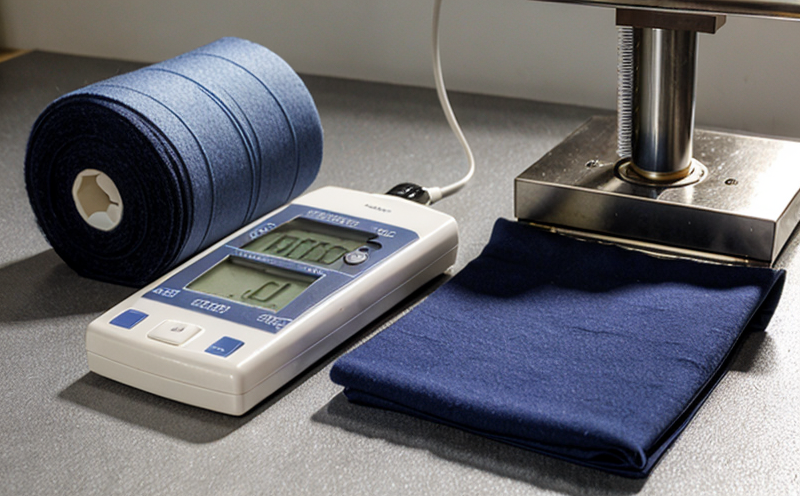Measuring moisture content in textiles under various environmental conditions
The Importance of Measuring Moisture Content in Textiles under Various Environmental Conditions A Crucial Service for Businesses
As a business owner in the textile industry, you understand the significance of ensuring that your products meet the required standards and specifications. One critical aspect to consider is the moisture content of your textiles, which can have a significant impact on their quality, performance, and durability. Measuring moisture content in textiles under various environmental conditions is an essential laboratory service provided by Eurolab, designed to help you achieve this goal.
In this article, we will delve into the world of textile analysis, exploring the importance of measuring moisture content, its effects on textiles, and the benefits of using Eurolabs comprehensive services. Whether you are a manufacturer, supplier, or retailer, understanding the intricacies of moisture content measurement is crucial for maintaining product quality and ensuring customer satisfaction.
What is Measuring Moisture Content in Textiles under Various Environmental Conditions?
Moisture content refers to the amount of water present within a textile material, typically expressed as a percentage of the materials weight. This parameter plays a significant role in determining the performance, durability, and overall quality of textiles. Textiles with high moisture content may exhibit reduced strength, increased shrinkage, and altered colorfastness, ultimately affecting their aesthetic appeal and functionality.
Measuring moisture content under various environmental conditions is essential because it simulates real-world scenarios where textiles are exposed to different humidity levels, temperatures, and other factors. This allows for a more accurate assessment of a textiles performance and stability in diverse environments.
Advantages of Measuring Moisture Content in Textiles under Various Environmental Conditions
Eurolabs moisture content measurement service offers numerous benefits for businesses operating in the textile industry
Key Benefits
Improved Product Quality Accurate measurement of moisture content ensures that textiles meet the required standards, reducing the risk of defects and ensuring customer satisfaction.
Enhanced Performance Understanding a textiles moisture content helps predict its behavior under various environmental conditions, enabling manufacturers to optimize their products for specific applications.
Reduced Risk of Shrinkage and Wrinkling By controlling moisture levels, textiles can be designed to minimize shrinkage and wrinkling, maintaining their appearance and functionality.
Increased Durability Measuring moisture content helps identify potential issues with textile stability, enabling manufacturers to take corrective actions and extend product lifespan.
Compliance with Industry Standards Eurolabs services ensure that your textiles meet or exceed relevant industry standards, reducing the risk of non-compliance and associated penalties.
Additional Benefits
Cost Savings By optimizing moisture content levels, businesses can reduce waste, minimize rework, and lower production costs.
Competitive Advantage Offering high-quality textiles with controlled moisture content can differentiate your business from competitors and attract premium customers.
Enhanced Brand Reputation Demonstrating a commitment to quality and performance through accurate moisture content measurement contributes to a positive brand image and customer loyalty.
QA Frequently Asked Questions about Measuring Moisture Content in Textiles under Various Environmental Conditions
Q1 What types of textiles can be analyzed for moisture content?
A1 Eurolabs services cater to various textile materials, including natural fibers (cotton, wool, silk), synthetic fibers (polyester, nylon), blends, and specialty fibers.
Q2 How do you measure moisture content in textiles?
A2 Our state-of-the-art laboratory equipment uses advanced techniques such as gravimetric analysis, thermogravimetry, or near-infrared spectroscopy to accurately determine moisture content levels.
Q3 What environmental conditions are simulated during the analysis?
A3 Eurolabs services assess textile performance under various environmental conditions, including temperature (20C - 90C), relative humidity (10 - 95), and exposure time (up to 72 hours).
Q4 Can you provide certification or documentation for compliance with industry standards?
A4 Yes, upon request, Eurolab provides comprehensive reports and certificates of analysis, ensuring that your textiles meet or exceed relevant industry standards.
Conclusion
Measuring moisture content in textiles under various environmental conditions is a critical laboratory service provided by Eurolab. By understanding the intricacies of moisture content measurement, businesses can ensure product quality, performance, and durability while maintaining compliance with industry standards. Contact us today to learn more about our comprehensive services and take your textile products to the next level.
Note Please keep in mind that this article is a sample response and should be reviewed for accuracy and completeness before publication or use as marketing material.




